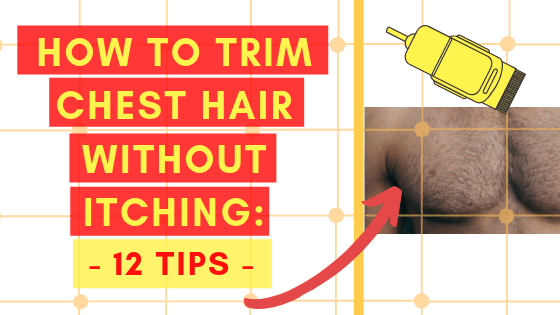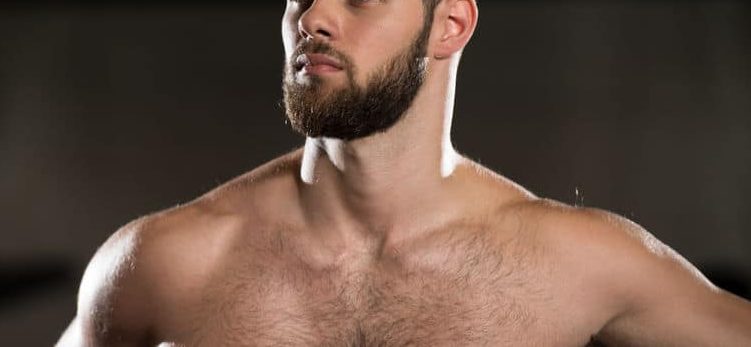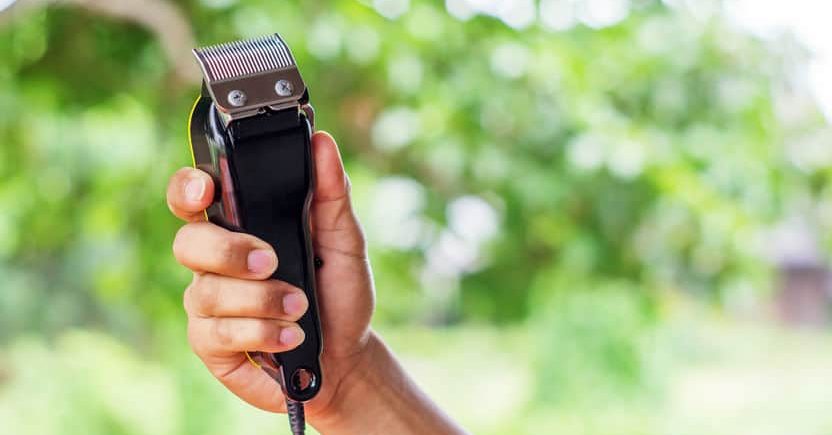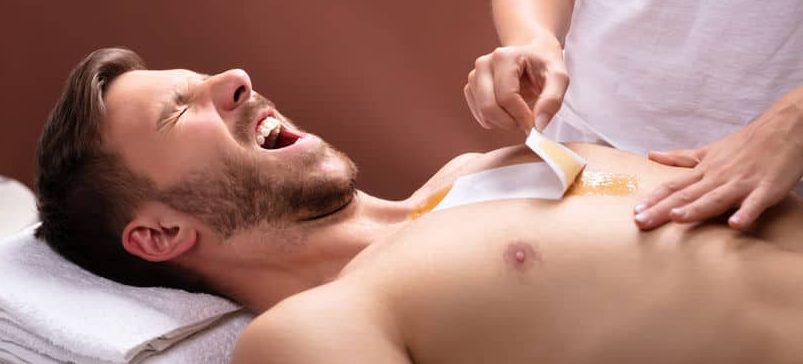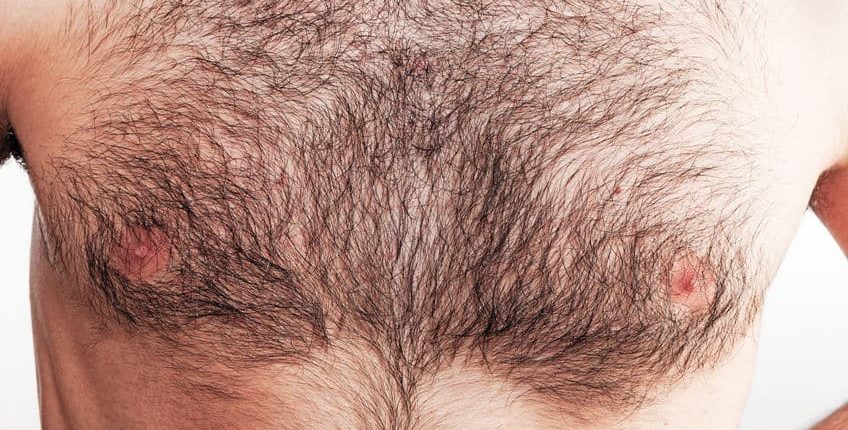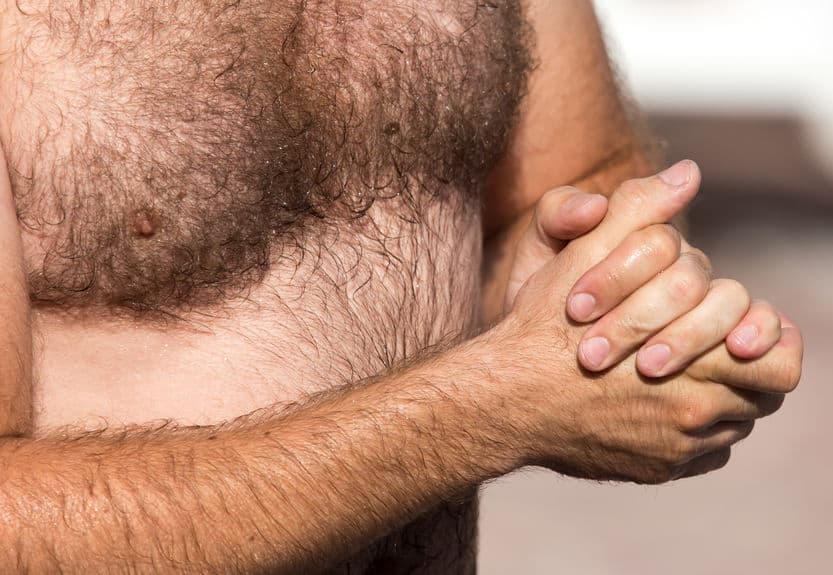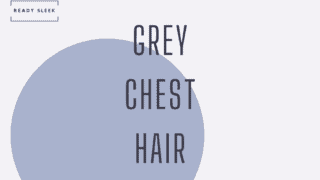It’s an issue that has plagued grooming enthusiasts for years. So, how exactly do you trim your chest hair without causing itching?
There are several steps you could take: take a warm shower with no harsh gels or soaps, use a fresh razor and a sensitive shaving gel, and take time to ensure the correct technique.
By the way, click here to find out my most recommended chest hair grooming tools.
Now let’s dig deeper.
Why Does Trimmed Chest Hair Feel Itchy?
Just before we dive headfirst into a sea of the juiciest chest grooming tips you could ever believe, it’s a good idea to take a moment to learn the why.
What’s with the itch?
When a razor blade cuts hair on your chest, it doesn’t actually remove the entire hair.
The follicle remains intact under the skin, and what you’ve done is simply cut the hair close to the surface.
Now, the shorter you cut the hair, generally the more likely it is for the skin to become irritated and itchy. This is why shaving generally causes more irritation than trimming.
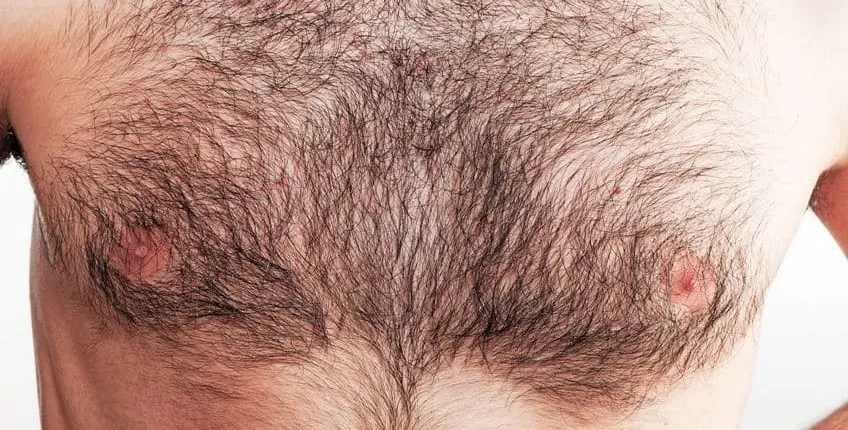
9 Tips To Reduce Itching After Trimming Your Chest Hair
1. Use a fresh razor
This one is essential. Especially if you are shaving as opposed to trimming and the blade is coming into close contact with the skin, you want to make sure that the blade is clean. Even better, new.
2. Use a sensitive shaving gel
Using a shaving gel or cream enriched with soothing ingredients and is (once again) fragrance-free should ensure that you’re giving your skin enough TLC.
Do remember to regularly top up the gel during the shaving process if you feel like it’s running dry. Yes, it’s important not to waste, but in these circumstances, you need to make sure that you’re lathering yourself up to a more than adequate extent.
3. Take your time
Rushing through the shaving or trimming process is going to lead to carelessness. You need to make sure you set aside enough time for the entire process without having to hurry.
Taking it slow should reduce the likelihood of nicking the skin.
It’ll also make sure you’re using the appropriate technique (which we’ll come on to in a minute) as well as using enough lubricating gel to avoid friction.
4. Try not to shave against the grain
Rub up and down your chest and figure out in which direction you encounter resistance. That direction is against the grain (ATG) or in other words the opposite direction of the hair’s growth.
Shaving ATG generally increases the likelihood of irritation.
Having to bear this in mind at all times takes concentration and therefore time, which is why rushing through this is a no-no.
5. Avoid re-strokes
A very significant percentage of blade strokes across your chest will be “re-strokes”.
The problem is, after the first stroke, you remove the gel and lubrication. The second stroke is essentially a blade gliding over unlubricated skin.
Be aware of shaving or trimming over the same area over and over again. Also, just use gentle pressure. There’s no need to use force.
6. Compresses
It’s over. As you lay your weapon (be it razor, trimmer, or groomer) back down and you walk away from the battle site, you notice a prickly itch arise.
What to do? If you shaved your chest and you’ve now got stubble, those tiny little hairs are now pricking against your skin.
Consider a damp, clean cloth over your chest – it can be soothing.
7. Moisturize
By this point, your chest skin has gone through a lot. You’ve likely scratched, rubbed, pulled, and plucked without even realizing it. Moisturizing is a phenomenal way to counteract irritation.
8. Wear loose clothing
The feel of a tight T-shirt rubbing against a trimmed chest is a discomfort that could be avoided. As it comes into contact with irritated skin it’s going to cause some seriously distracting itching.
Plus it’s essentially just causing more friction over an area of skin that’s seen plenty of that already.
Wearing loose, soft upper bodywear for a few days after the act should reduce the discomfort.
9. Give it time
The main point here is – don’t shave too often! Remember what I said about re-strokes? The same principle applies.
Doing this every few days or even weeks shouldn’t be necessary.
It’s therefore important not to rush into hair removal again.
Shaving, Trimming, Or Waxing Chest Hair: Which One Causes More Itching?
As mentioned, shaving cuts the hair close to the skin, leaving stubble which can rub and cause itching.
With trimming, the hair isn’t usually cut that close to the skin and although this is great it still can cause discomfort and itching.
Waxing on the other hand actually pulls the hairs out from their roots, so you don’t have the prickle of stubble or short hairs to contend with.
At the end of the day, it’s personal preference. Waxing is generally less itchy than shaving or trimming the chest. However, it’s also less practical as you most likely need someone to do it for you – ideally a professional.
Ready Sleek founder. Obsessed with casual style and the minimalist approach to building a highly functional wardrobe. Also a fan of classic, vintage hairstyles.

